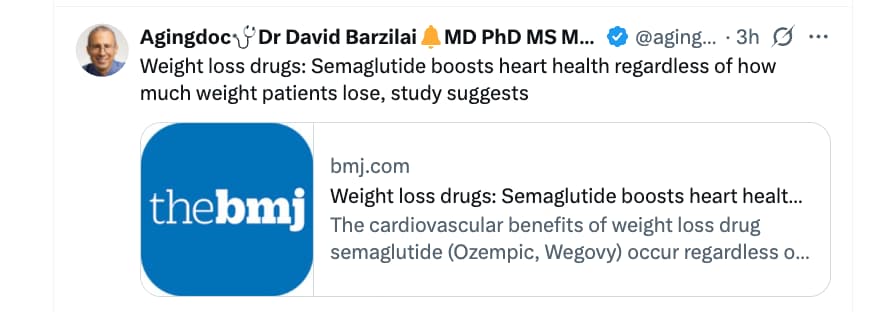Wish I could tell you. This wasn’t a test I ordered from a lab. This was a test I got as a routine yearly physical at UCLA, and for some reason they decided this year to just do the bare bones old style blood test where the lipid panel is just the TC/LDL-C/HDL/TRG, and so on for the rest of the biomarkers. Not even fasting insulin. I was shocked when I got the results. Assholes. Again I’ll have to go get my own labs much sooner than planned just to get my data (originally was going to get my next labs Feb. 2026). Standard medical care is continuing to be useless despite my paying for insurance at UCLA for decades. Back to doing my own labs, getting my own tests and drugs and ignoring the useless establishment.
Ah, that’s too bad. My apoB is about 2/3 of my LDL, so if you’re like me, your apoB might already be below mg/dL.
My ApoB usually runs about 8-10 mg/dL higher than my LDL so this is interesting to hear.
ApoB is like $12 at Goodlabs… Its easy to get a test anytime: [REFERENCE] Master list of all places to get blood tests - #24 by RapAdmin
When assessing ASCVD risk, I’d start by measuring the full lipid panel plus ApoB and ApoA1, later on, you can often track risk using good proxies (especially ApoB). It’s essentially about how your body prefers to transport cholesterol: more via ApoA1 (HDL) usually means lower risk, more via ApoB (LDL, VLDL, etc.) means higher risk. In my case, ApoA1 is much higher than HDL-C, and ApoB is about just shy of 2/3 of LDL-C, which suggests relatively fewer ApoB particles for a given LDL-C. But the key is still the absolute ApoB level and overall clinical context.
I wouldn’t use a PCSK9 inhibitor purely for primary prevention or “longevity hacking”. They have its role in ASCVD risk reduction in clearly high-risk situations. Based on current MR data, HMGCR (statins) looks possibly better for combined cardiovascular and dementia outcomes, but if I had to bet mechanistically on a longevity leaning lipid target, I’d pick CETP inhibition (obicetrapib) while we wait for definitive outcome data.
My ApoB typically runs at the same level as my LDL or a few points lower. My ApoB is 58 and LDL is 64 the last time I checked. Before that, both had been 48.
Personally, I think a “small amount of everything” approach would be great. Low dose statin + ezetimibe + PCKSK9i (can go off-label, monthly injections to save money and reduce dosage), then add your BA or CETP inhibition to taste. Then you’re hitting multiple pathways without really running into side effects which come with high doses.
And, daily D3. I have been taking this supplement since Covid.
Common vitamin (D3) could protect some heart attack survivors, study shows
This article talks about a study of LDL-C in ischemic stroke survivors and MACE risk. Takeaway seems to be lower is better. What blows me away is that they had 666 patients in an LDL-C < 20mg/dL group!
Mine was 22 mg/dL when checked yesterday! The only difference in my routine is that now I’m on branded Nexlizet (bempidoic acid+ ezetimibe) instead of the generic version from India.
